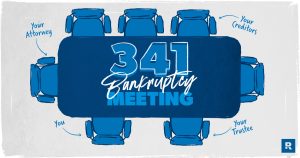Retirement typically means shifting your focus from diligently saving your money over the course of years and decades to managing those funds and spending them responsibly.
If you have a Roth IRA, you have several options for your account once you enter your golden years. Of course, you can start taking tax-free withdrawals or simply let your savings continue to grow tax-free, tapping them as needed. You may also consider transferring funds from other accounts, like a 401(k), into your Roth IRA. In some circumstances, you may even be able to continue making contributions to your Roth account.
The option you choose will depend on your personal situation, including your spending budget, other sources of income and your desire to leave a legacy.
Roth IRA Rules
A Roth IRA is a pre-tax retirement account that’s funded with money that’s already been taxed. In exchange for paying taxes on your contributions upfront, you can withdraw funds – contributions and investment earnings – without owing taxes or penalties, as long as you are at least 59 ½ years old and have had the account for at least five years. You also don’t have to take required minimum distributions (RMDs), so you can let the money grow tax-free for as long as you like.
These features make Roth IRAs powerful retirement saving tools, especially for younger savers who can enjoy the tax-free investment growth over the long term. They’re also particularly useful for people who expect to be in a higher tax bracket in retirement or those who want more control over the taxes they may pay on Social Security benefits later on.
Roth IRA in Retirement

Since RMD rules don’t apply to Roth accounts, you won’t have to start taking scheduled withdrawals when you hit age 73 (or 75 for people who turn 74 after Dec. 31, 2032). As a result, you won’t have to worry about RMDs adding to your tax bill and potentially pushing you into a higher income tax bracket.
If you don’t have other sources of income, you will have to fund your retirement with Roth IRA withdrawals. The good news here is that your withdrawals won’t be taxed, as long as you are 59 ½ or older and five years have passed since your first contribution to any Roth IRA.
It’s a good idea to check your asset allocation periodically during the accumulation phase, and the same is true once you retire. Many retirees change their asset allocations to emphasize low-risk assets such as bonds or other fixed-income investments. If you are more interested in long-term growth, you may allocate a higher percentage to stocks. Generally speaking, diversifying your portfolio with a mix of stocks and bonds can help it weather market downturns more effectively while still allowing you to take partial advantage of rising markets.
You also may consider moving your Roth IRA to a different bank, brokerage or other institution that has lower fees or more investment options. Investment fees can add up over time, inhibiting the growth of your Roth IRA. And more investment choices may allow you to tailor your portfolio to get better returns or manage risk.
It’s permissible to keep making contributions to your Roth IRA. However, you can only do this if you have earned income, like wages from a part-time job. You can’t put more money into your Roth if all you have is income from investments, Social Security benefits or payments from a pension or annuity.
Sometimes it can make sense to transfer funds into your Roth IRA from pre-tax retirement accounts such as traditional IRAs, although this triggers an immediate tax bill. For example, a deathbed Roth IRA conversion can make sense for someone who doesn’t have long to live and wants to leave assets to heirs who are in a higher tax bracket than them. By converting the account into a Roth IRA while they’re still alive, the person who’s nearing the end of their life assumes the tax liability while their heir will inherit tax-free Roth assets.
Roth IRA Spending Strategies

A general strategy for spending down retirement assets is to first spend funds from your bank or brokerage accounts, starting with the lowest-earning taxable assets and then moving to the higher-earning taxable assets. After that, retirees are often advised to tap their tax-deferred accounts such as traditional IRAs and traditional 401(k) plans.
After-tax retirement accounts, including Roth IRAs, are likely the last sources of withdrawals to pay retirement living expenses. Preserving these tax-advantaged assets gives them more time to grow untaxed. Once you do start taking withdrawals from your Roth IRA, however, the income won’t affect taxation of your Social Security benefits.
You may also choose to limit your Roth withdrawals so you can have more tax-free assets to pass on to your heirs. This will likely be of secondary importance to providing you with enough income for a secure retirement. However, bequeathing Roth IRA assets can be tax-efficient because heirs will receive them tax-free. And if you need help building an estate plan, consider connecting with an estate planning financial advisor.
Bottom Line
You have plenty of options for your Roth IRA in retirement. Unlike traditional IRAs and 401(k)s, Roth IRAs aren’t subject to RMD rules, so you can leave your money invested tax-free in your account for as long as you like. Then again, you can also withdraw from your Roth IRA tax-free once you turn 59 ½ years old and five years have passed since you made your first contribution to any Roth IRA.
Retirement Planning Tips
- How much income will you need to afford the lifestyle that you desire in retirement? SmartAsset’s retirement calculator can help you estimate how much your savings could be worth by the time you retire, as well as how much income you’ll need to generate to meet your expected level of spending.
- If you’re contemplating the best way to tap your various sources of retirement income, consider discussing it with a financial advisor. Finding a financial advisor doesn’t have to be hard. SmartAsset’s free tool matches you with up to three vetted financial advisors who serve your area, and you can have a free introductory call with your advisor matches to decide which one you feel is right for you. If you’re ready to find an advisor who can help you achieve your financial goals, get started now.
Photo credit: ©iStock.com/Kameleon007, ©iStock.com/skynesher, ©iStock.com/Luke Chan
Read the full article here










